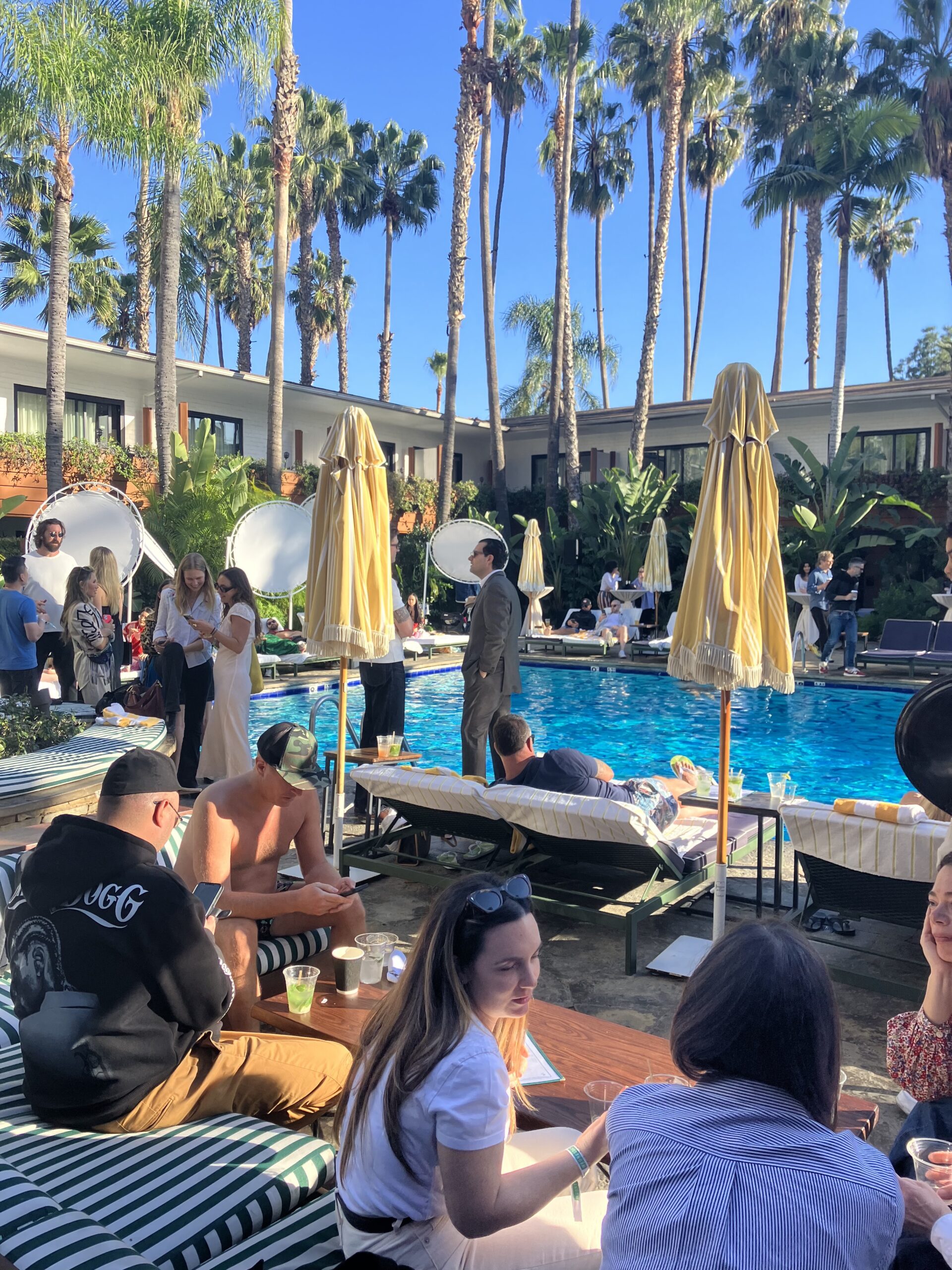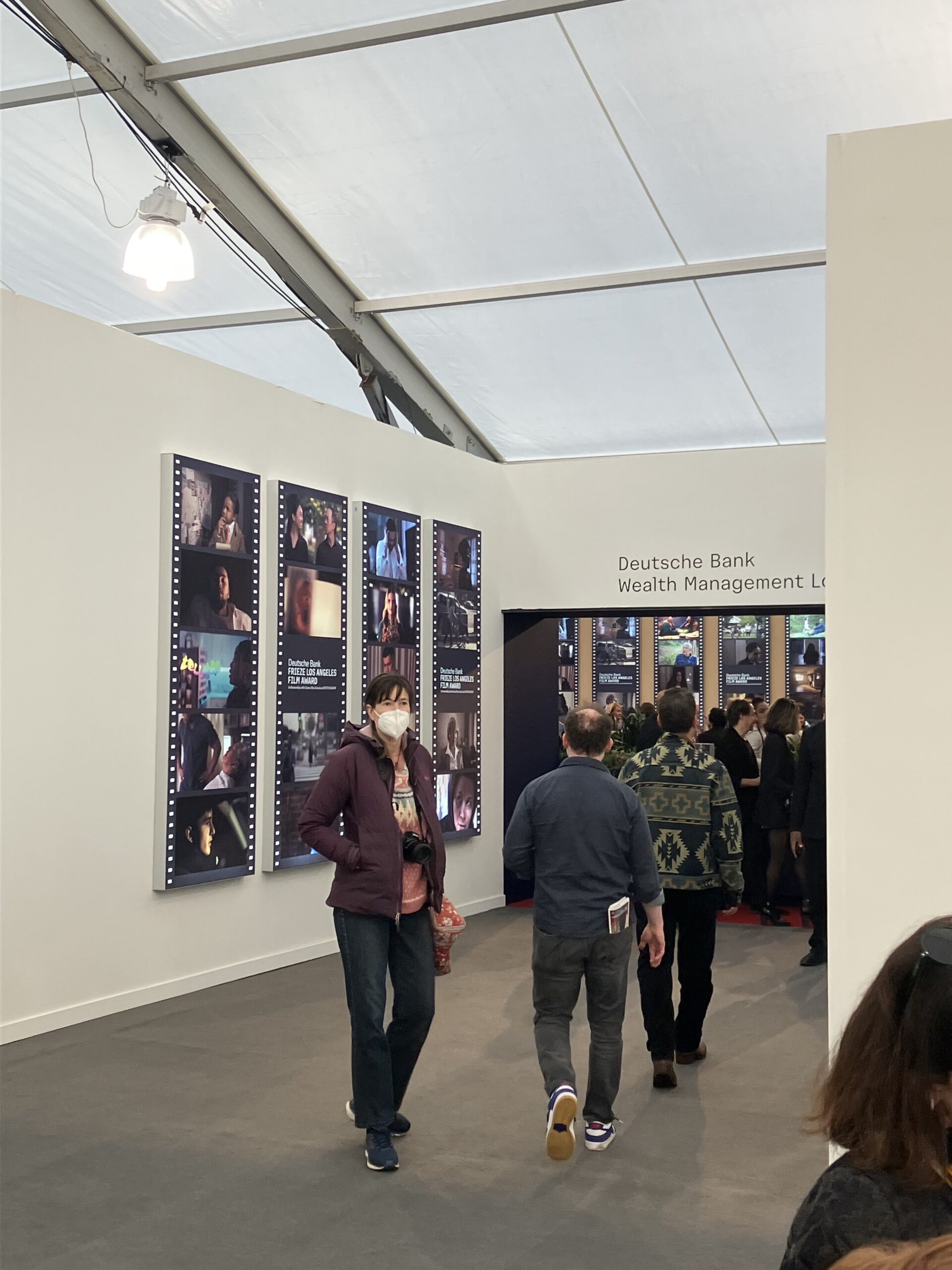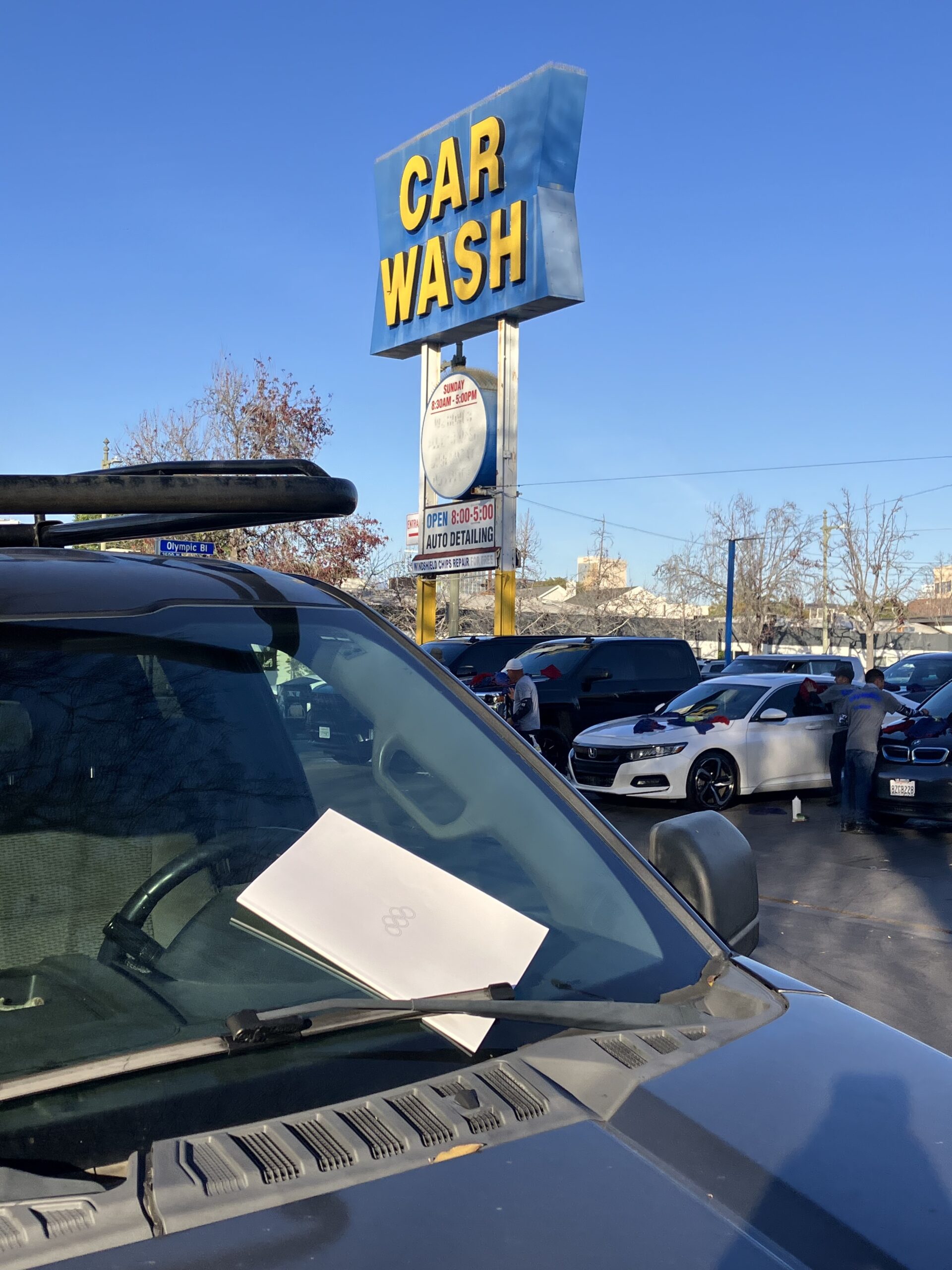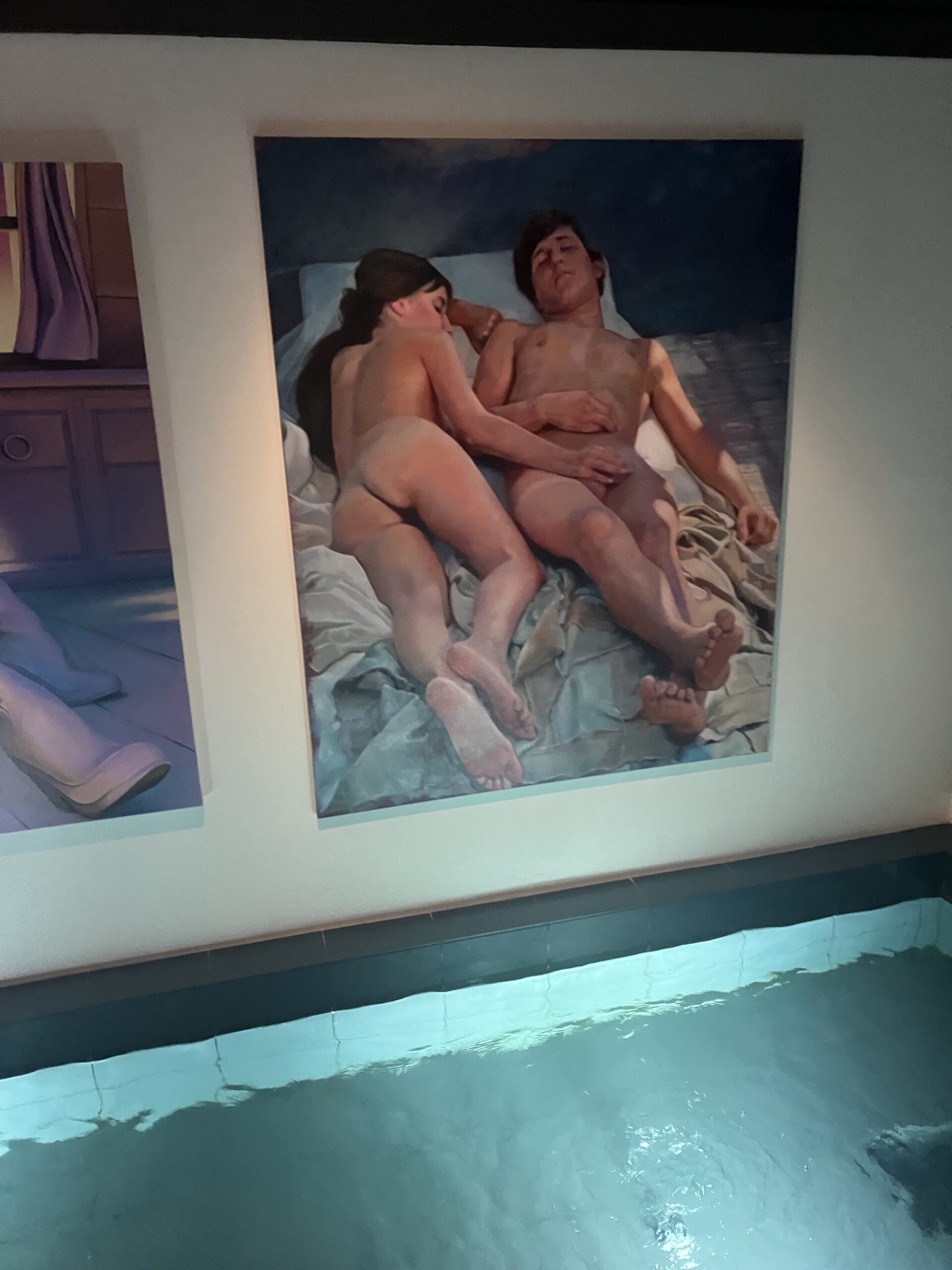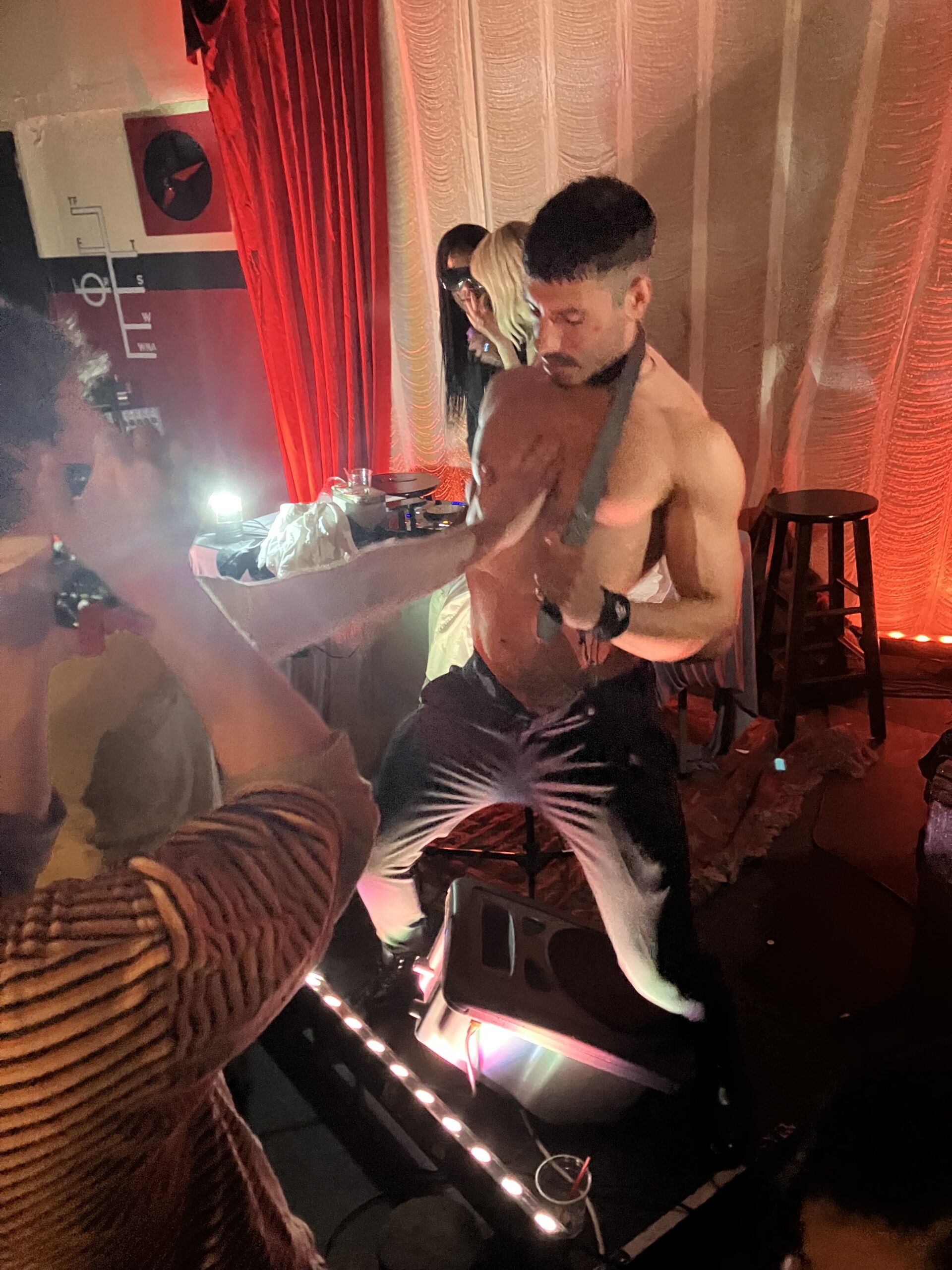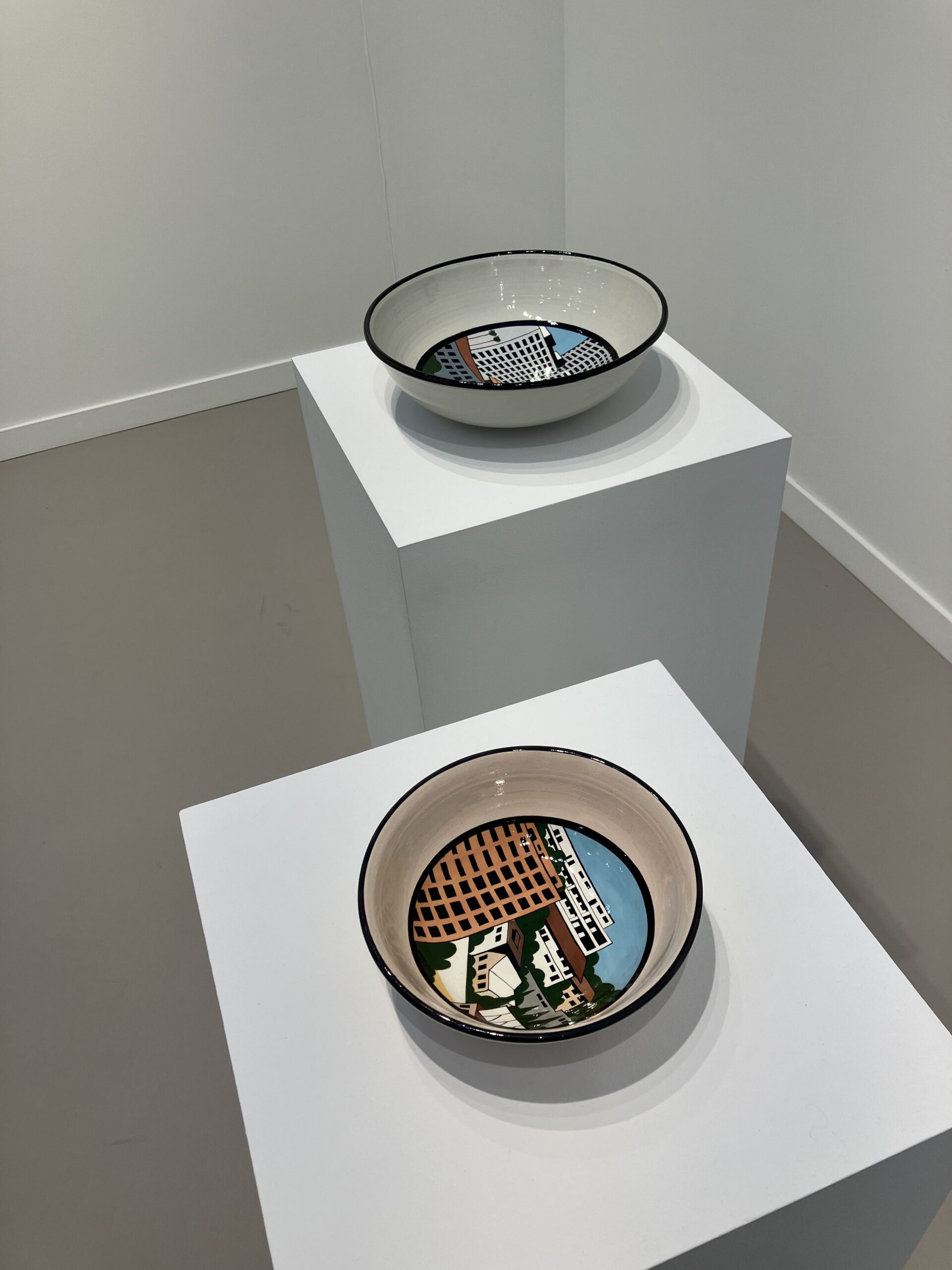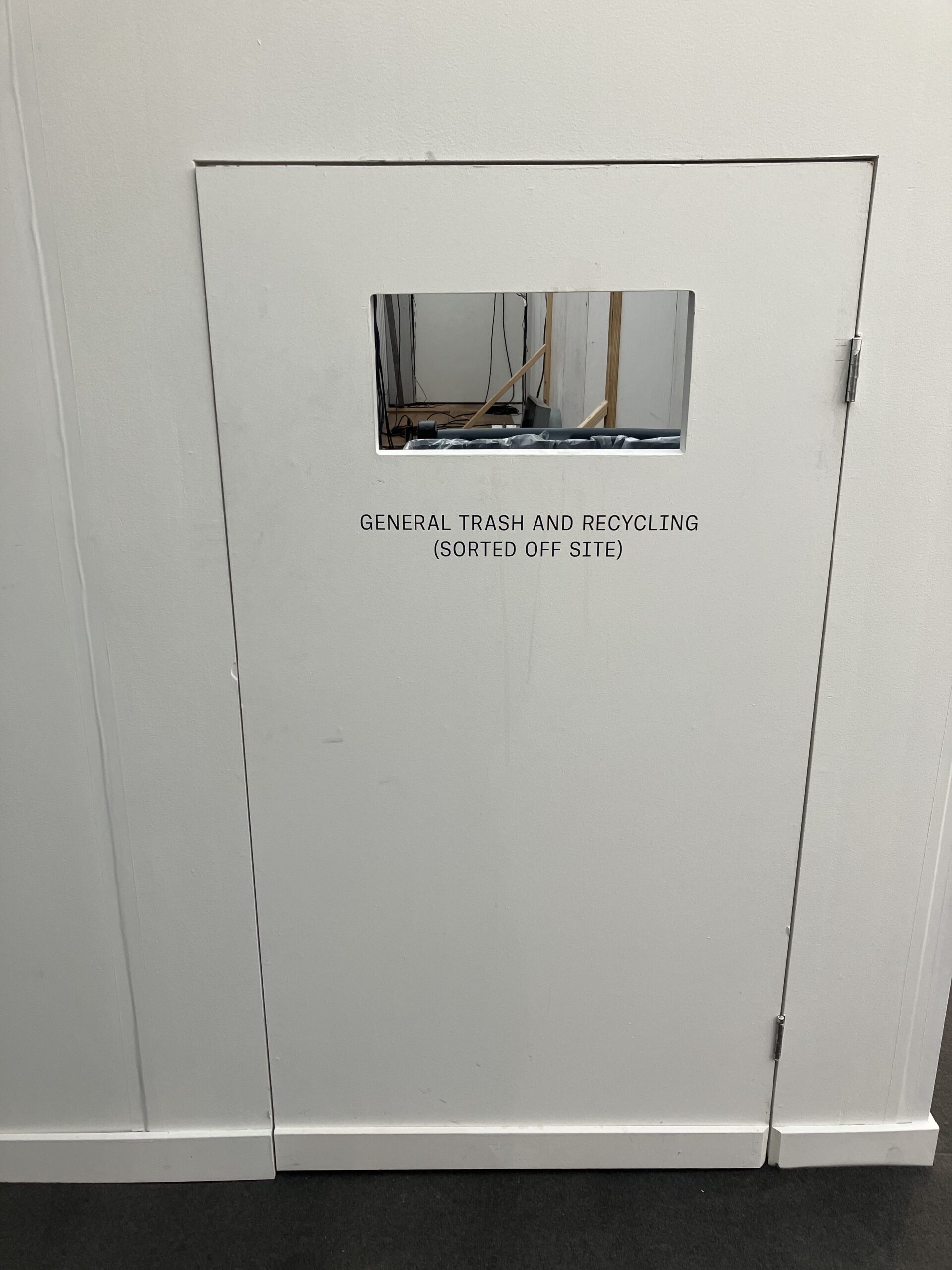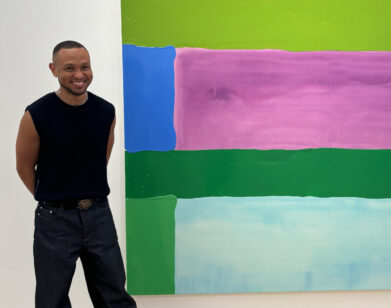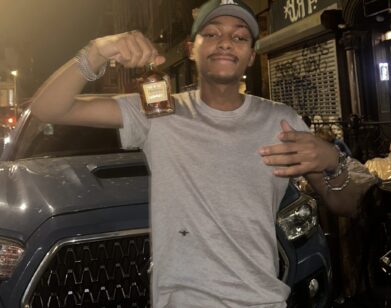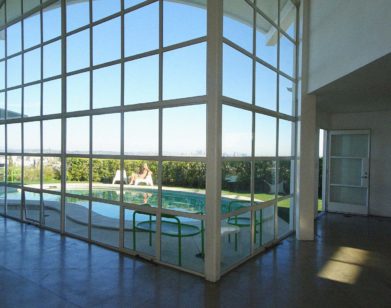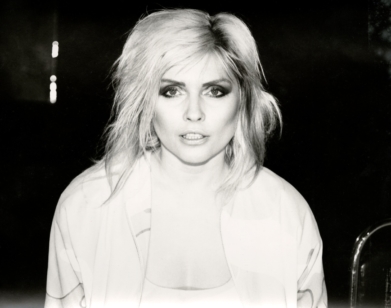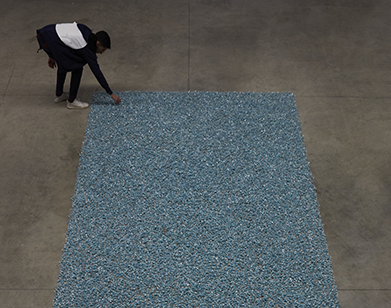SCENE
“I’m Here for More”: My Week at the Frieze Art Fair in Los Angeles
My week in Los Angeles for the art fairs started in a place I’d never been before. Last Saturday, at the American Legion post 206 in Highland Park, D’Ette Nogle’s installation MATERIALOUTPOST: IN-COUNTRY was on display for two days. The community room was strewn with fliers, which appeared like remnants from the previous night’s celebration. Some read “Ceasefire,” disturbing a few Legion members who had wandered in. Upon entering the space I had the feeling that the event had already happened. What Nogle had made and added to the space—and what had been there for years collecting dust—isn’t initially obvious. Around the room, situated between mostly empty glass cabinets showcasing plastic trophies from the 1980s and crooked framed pictures of the American flag, are Nogle’s paintings placed atop ammunition boxes. One, a white line drawing on a black canvas of the room, another of a cartoonish explosion on a green screen color field merging with its environment. The work was somewhere between a celebration and a warning, succeeding primarily because of the artist’s ability to create such close disorienting proximity between the two. Later that night was Nogle’s Vietnam War-themed 50th birthday party. But rather than a superficial acknowledgment that somewhere there’s a war going on, her work emphasizes this very complicity, implicating herself and the viewer in the process.
Intentionally or not, Nogle’s piece set a darkly humorous tone for the week ahead. Art fairs have become an inevitable activity of the art world, where participation is virtually imperative. Frieze Art Fairs exist in most major cities, oversaturated with galleries and corporate partners. By now there’s no denying that the fairs are nothing more than an elevated retail experience. People either scoff at its presence or indulge in its festivities. I often land somewhere in the middle—simultaneously fatigued and amused by both—committed to my role as a diligent observer, which requires some form of participation.
Later that day, on the other side of town, I stopped by a group show featuring work about or related to the Olympics, installed in the waiting area of a car wash that has been in operation since the 1940s. There, works by Edouard Leve, Chris Lipomi, Lucy McKenzie, and Edouard NG competed with the banal but pleasurable experience of watching one’s car being cleaned by other people. Patrons—of the car wash, that is—milled about the waiting area looking confused. Edourard NG’s painting of smeared Olympic rings looked as if it, too, had gone through the car wash, lending the show a cheeky sense of humor.
Artists like to feel like little tricksters rather than show ponies. In this type of exhibition space they get to realize that, creating an environment where they might observe how unsuspecting civilians interact with art. While few of the car wash patrons seemed to notice what was going on, some perked up upon catching a glimpse of the Olympic-themed porn collaged together by Lucy McKenzie.
On Monday, in the hotel lobby of the Edition, I celebrated the start of Frieze Week on the dime of a podcast I’ve never listened to. In the high-ceilinged lobby, among mustard colored pool tables, LA-based artists Jordan Wolfson, Alex Hubbard, and Ivan Morley, typically siloed from one another in their big studios, greeted each other with gentle nods clinking glasses of mezcal. I spotted the writer Geoff Dyer, in the parking lot, who didn’t appear to be enjoying himself and avoided going back inside.
At the Roosevelt Hotel on Wednesday morning, women were fussing around with badges as sharply dressed security guards walked through the lobby holding velvet rope in preparation for the imminent arrival of VIPs at Felix. I overheard a woman recounting how she had just run into her-ex husband, whom she had, at one point, talked out of buying a [Yoshimoto] Nara for cheap. Perhaps a mistake on her part. A friend of hers chimed in: “the best Nara I bought was from your ex-husband.” Festival-goers were lounging by the pool and enjoying their overpriced drinks as advisors towed their clients around like their grumpy teenage children.
At the MAK center dinner honoring Austrian artist Valie Export later that evening, I sat next to Tracy O’Brien, a collector from the West Side (most are), who reminded me to always get a piece from artists I sleep with. She had me repeat it a couple times, like a mantra. She had, in fact, just bought a painting made by my ex, which prompted me to wonder if there might be a work on paper somewhere in my apartment. She left before dessert, leaving me to chat with her husband, a successful lawyer to artists. As it turned out, his wife was going to the same party I was: we met at the mansion belonging to Sybil Robson Orr and Matthew Orr, relatives of the Walmart family, where she noted that we were “only in the pool house.” The main room doubled as a Turrell piece, and hosts Hans Ulrich Obrist and Bettina Korrek mingled with Alex Israel and Lana Del Rey as the light changed from blue to pink to red (some people looking better in one light than others). The vibe seemed rather business-oriented; curators talked to collectors and everyone left before 1am. Standing at one end of the pool, I asked a former classmate of mine from college, now a dealer at Philips, what the framed piece above the pool was. “Oh, I think that’s just a window,” he clarified.
This year’s fair is Frieze’s fifth in L.A. and second at the Santa Monica Airport. Being in the tent itself evokes the stale feeling of being at the airport, a liminal space void of daylight. In hushed tones with dealers who had been at the Lomex/Gaylord/O-Town House party at the Mid-City Yacht Club the night before, we talked about some drama that occurred: a canceled gallerist who recently moved from New York to L.A. had allegedly punched a fellow party goer in the face outside and was maced by the bouncer who wore a comically large badge around his neck. Inside, the scene was comparably tame: two male strippers continued to dance for the crowd as people reclined in the boats that doubled as club furniture.
Though the L.A. art world often feels small, each year the fair indicates its steady growth. But this augmentation seems to be in all the wrong places; the scene is bloating more than it is building muscle. Spaces left for freaks have started to dwindle — I showed up too late to get into Friday night’s “LA art world prom,” as someone described the party at tech mogul Michael Heyward’s house in Beverly Hills, where a strict bouncer shooed me back down the hill in the rain. I never liked prom, anyway.
The refrain from Nora Turato’s performance at Sprüth Magers on Tuesday lingered throughout the week: “I’m here for more.” The Croatian performance artist delivered a rambling monologue pulling language from wellness and self-help rhetoric. Turato appeared in a black shirt and jeans barefoot in the gallery, with her arms out in front of her pacing with a kind of sturdy air. She oscillated between registers, creating a kind of ambiguously gendered character. In delivering this monologue, Turato exposed the contradictions inherent in much of this rhetoric: the encouragement to improve oneself is often paired with the language of validation. The recipient of this kind of evangelizing is left with a sense of longing: “I’m here for more.” Some found the piece cynical, or too ironic, but I found that Turato toed the line between irony and sincerity by implicating herself and the audience. Therein might lie the artist’s own ambivalence about success; she’s just joined the roster of Sprüth Magers after working with smaller galleries.
Signs of decline began to surface on Saturday at Maison D’Art, where a few Cady Noland works were viewable by appointment only and had only been advertised through word of mouth. The space is owned by shipping heir Theo Niarchos, who occasionally uses the space to show work from his personal collection. I was early to my appointment, as the voice on the intercom notified me, so I waited outside until two well-dressed Euro-looking couples filed out. Stefania Bortolomi and Ellie Rines (of 56 Henry) walked up, appointment-less, and tagged along. Rines had just received word that someone had stolen parts of Cynthia Telmadge’s sculpture “Class Gift,” installed outside at Frieze. “Thank you for letting me know,” Rines said, enunciating one syllable at a time in her rather nonplussed way. Once inside, a mousey gallery girl approached us to let us know that we had in fact made the appointment for Wednesday. As we were nearly escorted out of the nearly empty gallery, we asked if the limited capacity was at the behest of the artist, but the gallery girl attributed it to “curatorial direction.” The works, which were already chilly, felt chillier in the gallery space. Noland’s sculpture Bloody Mess (1988), resembles debris after a crash: rubber mats splayed on the floor, beer cans, lights, police equipment. Noland famously retreated from the public art world in the early 1990s. After this week, I do not blame her.

